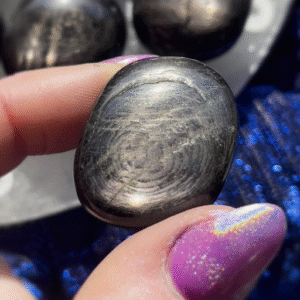Inked tattoos are a form of art, but have you ever wondered how many is too many? This is particularly important for people who are getting tattooed for the very first time or even for those who are veterans in the tattoo world. This blog is tailored to tell you how much is too much pain, time, healing, and the artist’s ability to bear designs. A creative expression comes with great pain which cannot be overlooked. This blog will also elaborate on the recovery process and spaced sessions. After reading this blog, you will know how to effectively plan your tattoo sessions and suffer the least.
What’s the maximum number of tattoos you can get in one session?
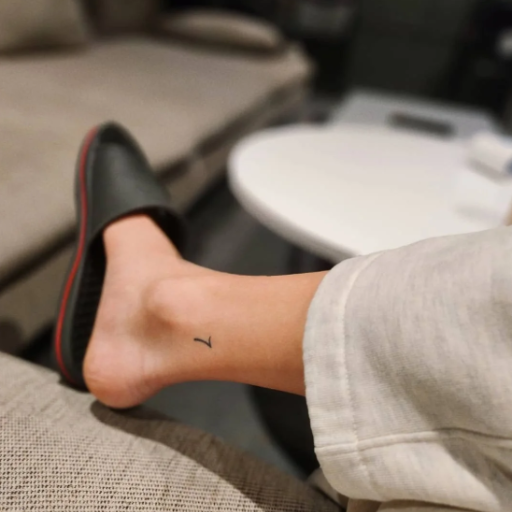
The maximum number of tattoos is dependent on how much you can tolerate pain, your available time, tattoo size, and complexity, among other factors. Simple and smaller tattoos can be done in multiples when compared to larger and complex tattoos, taking the full appointment. The tattoo artist’s skill and speed, as well as your body’s ability to endure pain, and the need to reposition during the session also matter greatly. A typical person can comfortably undergo a sitting of 3-6 hours on average, though this varies as well. It is always important to talk first to the artist to check the schedule that meets your needs and define the limits.
Factors Influencing the Number of Tattoos in a Single Session
An important determination of how many tattoos can be carried out in a single session is provided by many factors. It is the size and complexity of the design, which is of greatest importance. Tattoos that are smaller and less complicated are quicker to execute as compared to larger and more detailed tattoos, which take comparatively more time. Additionally, certain areas on the body can be more difficult for the artist to place and can even necessitate rests owing to sensitivity.
Also relevant is the tattoo artist’s skill and speed. Their level of professionalism greatly impacts the ease and speed at which they complete a multi-step tattoo, and what may take a less skilled artist hours can be completed in a fraction of that time. The ability to stay still and the pain tolerance also dictate the session length. People with better pain tolerance can generally endure longer sessions, which allows more work to be completed.
Lastly, the preparation along with materials also contributes to the expenses. How and where the set up will be done, stencils, and the cleaning will have a great impact on the speed at which the artist works between the tattoos. For proper session planning, these factors should be thoroughly discussed with the tattoo artist before starting the session.
Artist’s Tips on Getting Multiple Tattoos at Once
In my experience, preparation is critical when getting multiple tattoos in a single sitting. To begin, ensure that you are well-rested and well-nourished; get plenty of sleep, good food, and hydration. You would also benefit from wearing comfortable, loose-fitting clothing that is easy to remove and put back on so that the necessary parts of the body can be fully accessed. Finally, be sure to share all the pertinent details beforehand—your preferred designs and pain tolerance—for effective prioritization and pacing. Most importantly, don’t forget to bring snacks and something to occupy yourself during the many breaks you will need to take. It’s a long process, but the more relaxed both of us are, the better it will be.
Understanding your body’s limits for multiple tattoos
When preparing for multiple tattoos in one session, knowing your body’s limitations is critical. In this case, it is best to allow your body to speak to you—your pain tolerance and discomfort level will let you know when it is time to take a rest. Everyone is different endurance wise, but the right amount of food, hydration, and rest can go a long way. Communicating with your artist is also crucial as they will be able to help with modifying pacing and plan for shorter sessions when needed. Finally, as a rule of thumb for best skin recovery and design quality, try to separate your tattoos into multiple appointments.
Is it safe to get two tattoos in one day?

Having two tattoos done in a day can be relatively safe; however, your pain tolerance, health, and the size and placement of the tattoo all play a role. A willingness to tattoo less sensitive spots is more acceptable than some designs. The most important thing is not to push the limits of your body. Staying hydrated, eating beforehand, and taking breaks between sessions is a must. Talking to your tattoo artist about your expectations will help with the logistics of the process and ensure the tattoos can heal correctly.
Pros and cons of getting two tattoos in one day
Pros of Getting Two Tattoos in One Day
- Better Time Management – It may not be necessary to schedule several appointments as getting both tattoos done at once may suffice.
- Reduced Expenses – You may notice that some artists or shops have “combine multiple tattoos into one tattoo session” discounts which help you save.
- Uniform Style – Having the same artist execute the tattoos guarantees that the designs are uniform and cohesive.
- Simplified Aftercare – Having both tattoos heal simultaneously makes the recovery period significantly easier since only one recovery period needs to be managed rather than two.
Cons of Getting Two Tattoos in One Day
- Increased Pain and Tiredness – Sessions of longer duration demand physically and mentally exhausting effort, which could be significantly higher if the tattooing area is more sensitive.
- Overexertion Risks – Your body’s ability to fight off infection may be compromised when getting multiple tattoos, which can further escalate the healing time.
- Difficult Aftercare – If the tattoos are located in different parts of the body, taking care of them becomes more cumbersome.
- Less Attention From The Artist – Depending on the intricacy of your designs, the artist could become tired throughout a longer session, which might impact their accuracy.
For a smooth and pleasant process, it is wise to consider these elements critically and communicate your intentions clearly to your tattoo practitioner.
Aftercare considerations for multiple new tattoos
Attending to several fresh tattoos calls for considerably more care and examination. I carefully wash each tattoo with unscented soap and lukewarm water without scrubbing or agitating the skin. After patting them dry with a clean towel, I apply a thin layer of unfragranced ointment to aid in healing and hydration. To prevent cross-contamination, I wash my hands thoroughly and use clean materials to treat each tattoo separately. Avoiding direct sunlight, as well as refraining from soaking the tattoos in water like baths and pools, combined with loose and comfortable clothing, prevents unwanted irritation. If all steps are followed as required, the chances of the tattoos healing well are significantly increased.
How the healing process differs with multiple tattoos
Getting more than one tattoo simultaneously can slow down the healing process, and may take longer compared to healing a single tattoo, because your body divides its resources to multiple sites. While healing these areas, you may experience heightened fatigue and soreness, and additional strain may also worsen healing times. For effective healing to take place, it is vital to treat every tattoo with the same amount of care, focus, and attention, by following a set routine for each area that ensures thorough cleaning, moisturization, and protection. Maintaining hydration and good nutrition further aids the body’s natural healing process. To relieve discomfort, the body needs sufficient rest, which can be mitigated by not overloading your schedule. Each of these steps aids in ensuring optimal results.
What are the risks of getting multiple tattoos in one session?
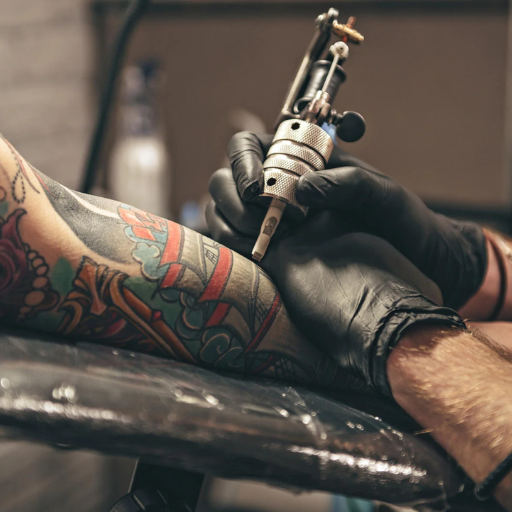
Having a lot of tattoos done at the same time comes with greater healthcare and physical risks. The actual tattooing process may take a long time, so that in itself can become a strain on your body, which will make you more fatigued and uncomfortable than before. The chance of infection increases because so many wounds need to be opened and taken care of. As a result, the immune system is also getting additional burden, which is more likely than not will result in slower healing. There is also the chance of receiving skin irritation, in op swelling or an allergic reaction when coming into contact with the ink. To balance all these risks it’s very important to maintain hygiene, rest sufficiently and care for the body. It’s best to have a counselor that can guide you along the process of determining what’s best for your body.
Impact on Your Immune System and Healing Ability
Getting a tattoo triggers the immune response as it begins to heal the perforations of the skin. White blood cells are sent to the area to control infection, while simultaneously, the body initiates the repair of the damaged tissue. If other factors are compromising your immune system, this response may be more harmful than helpful, especially in the short term. Adequate hydration, proper aftercare, and a well-balanced diet not only help in healing but also help in maintaining immune function. In addition, excessive strain on the immune system with large tattoos or multiple sessions in a short time frame can slow down healing. To reduce risk of poor outcomes, make sure you are healthy before the appointment, and make sure to follow the artist’s aftercare guidelines.
Pain management when getting multiple tattoos
When dealing with pain from getting multiple tattoos, I focus on mentally and physically preparing. To begin, I make sure to properly hydrate, eat a good meal before my session, and avoid alcohol and caffeine, as they thin the blood, which makes the experience more uncomfortable. I also talk to my tattoo artist about sensitive area numbing creams and sprays, as they can reduce the pain. Deep and steady breathing aids me in calming down and handling the discomfort. Lastly, I pay close attention to my body, if the pain is too much, I do not feel bad taking a break, which allows the process to be controlled and safe.
Possible Problems from Various Tattoo Injuries
Tattoos are a trendy way for people to represent themselves, but several tattoo injuries might carry certain risks that must be considered. The most common complications are infections, which might develop if basic aftercare instructions are not adhered to, which may lead to redness, swelling, pain, and/or any discharge from the tattoo. Another complication that arises is a reaction to some specific color of ink, which may lead to an everlasting itch or rash that will not go away. Scarring is also another problem, especially when the injury is interfered with during the remedial phase of healing, it may lead to improper skin regeneration. Besides that, from an excessive tattooed view in a small time frame, there might be certain dangers tattooing might cause to the immune system, which further slows healing and increases the risk of infection and fatigue. These complications can be avoided or minimized by using proper hygiene, following instructions accurately, and not tattooing too quickly.
How long should you wait between getting multiple tattoos?
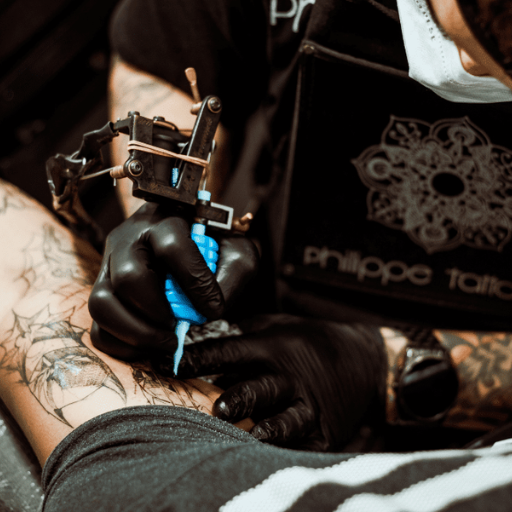
The recommended waiting period between getting two tattoos is highly individual and depends on how quickly one heals, as well as the size of the tattoo. Usually, for smaller tattoos the waiting period averages around 2-3 weeks, while more complex tattoos take 4-6 weeks. This waiting period allows the skin to heal properly so the artist has a better canvas to work with while reducing the chances of negative side effects. Speak to your tattoo artist for the best advice catered to your situation.
Time Between Tattoos: Optimal Healing Duration
In terms of time elapsed after getting a tattoo, the recommended healing period is 2-3 weeks for smaller tattoos, while larger tattoos are given an estimated healing period of 4-6 weeks. A majority of people should also take into consideration their overall health, aftercare routine, skin sensitivity, and tattoo placement; all of which will change these estimates. Waiting for a longer period ensures optimal results. Consult your tattoo artist to estimate your skin’s condition; this will create a more tailored guide as to what your situation calls for.
Factors affecting the waiting period between tattoos
Healing, your overall health, and the size or the complexity of your previous tattoo image influences how long to wait between tattoos. From personal experience, smaller tattoos require a minimum of 2-3 weeks for healing, while larger or more intricate pieces tend to take a little longer. Wound healing is facilitated by proper aftercare where the area should be kept clean and moisturized. The most important aspect is to listen to your body – if your skin feels tender or hasn’t fully recovered, you’ll need to be patient with yourself. You should always talk to your tattoo artist for tailored recommendations in regards to these specific issues.
Balancing eagerness and safety in multiple tattoo sessions
The best motto when dealing with multiple tattoo sessions is: enthusiasm, but do not go overboard. Generally, waiting for 2 to 3 weeks is recommended in between sessions for your body to heal properly. Of course, more elaborate tattoos take more time to heal due to the extra stress on the skin. If you try to rush the process, you will end up with delayed healing, possible infection, or even losing the design.
You must listen to your body. If the area feels tender, swollen, or you find yourself scabbing, it would be best to delay the next session. Keeping up with proper aftercare is crucial, whether it be cleaning your tattoo, staying out of direct sunlight, or drinking lots of water. Your tattoo artist is there to help, so do not hesitate to ask them for customized advice based on where your tattoo is placed, the complexity, and the size of your tattoo. Remember, being patient will keep you safe while ensuring that your artwork is of high quality.
What’s the best approach for getting a full sleeve tattoo?
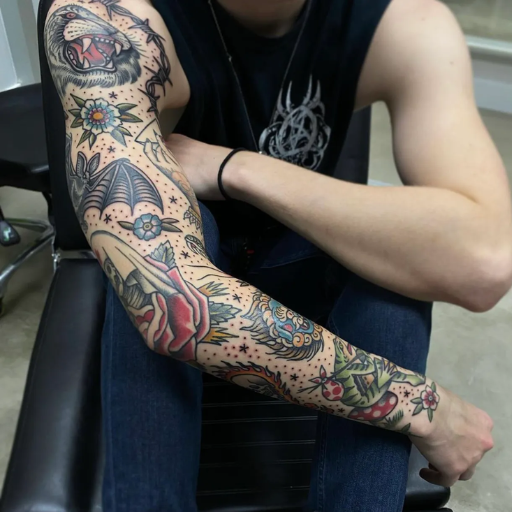
Getting a full sleeve tattoo is like preparing for battle; a step-by-step approach is necessary. To begin, look for a tattoo artist that specializes in big pieces and make sure their work resonates with your ideas. Arrange for a consultation meeting so that you can relay and discuss your ideas, motifs, and arm design in detail. Try to break appointments into pieces reasonably sized, because completing a tattoo sleeve is usually done over multiple sittings across weeks and sometimes months. Remember to take care of the tattoo portion in between sessions, so that the skin can heal properly. Completing a full sleeve tattoo requires a lot of patience, but it’s certainly worth the wait.
Arranging a complete sleeve tattoo: Steps and methods
Having a sleeve tattoo required a lot of planning and time. That is why, whenever I design a sleeve tattoo, I focus on my artist so that my ideas, themes, and preferences can be mixed into one cohesive design. It was crucial that I did my research and chose a tattoo artist who had extensive experience and possessed a portfolio that matched the style of my tattoo. Overall, we established a flow in which every part of the sleeve would connect without any gaps or mismatches. Splitting the sessions to allow for proper healing proved to be the most important step of all. Along with this, patience was essential as I had to ensure the tattoo would be vibrant and well executed.
Scheduling Multiple Sessions for a Full Sleeve
One of the important things with creating a full sleeve tattoo is a plan. It may take 3-6 hours for every session, and you might need multiple in between healing breaks to get everything done. Completing a sleeve tattoo would involve remembering a lot of details like the design elements, shading, and other components, which will dictate how many breaks you will need in between sessions. If you want to not have major complaints during the sessions, hydration along with rest is key. The most important piece of advice would be addressing the schedule and time plan with the tattoo artist beforehand. This way there are no miscommunications along the process.
Helpful Aftercare Tips for Big Tattoos
Proper care for large tattoos begins with hygiene and moisturizing; I take gentle care of the area by washing it with lukewarm water and unscented soap, and gently patting it dry with a clean towel. Then, I apply a thin layer of skin healing ointment for hydration that also helps prevent scabbing. To prevent irritation, I stay out of the sun, avoid tight clothing, and use loose clothing. Staying hydrated and eating nutritious food aids in healing from the inside. The most important part is to not peel or scratch the tattoo as it can ruin the healing process and distort the design. Following these tips ensures my tattoo heals flawlessly.
References
Frequently Asked Questions (FAQ)
Q: How many tattoos can you get at once?
A: There’s no strict limit on how many tattoos you can get in one sitting, but most artists recommend getting no more than 2-3 small tattoos or one larger piece. The number depends on factors like your pain tolerance, the complexity of the designs, and the different parts of the body being tattooed. It’s important to remember that each tattoo is a wound, so getting multiple tattoos at once means multiple wounds to heal.
Q: What are the risks of getting multiple tattoos in a single session?
A: Getting more than one tattoo at a time can increase the risk of infection, prolong healing time, and potentially overwhelm your immune system. Multiple tattoos may also lead to increased pain and discomfort during the healing process. Additionally, it can be challenging to properly care for multiple fresh tattoos, especially if they’re in hard-to-reach areas.
Q: Can I get tattoos from two different artists in one day?
A: While it’s possible to get tattoos from two artists in one day, it’s generally not recommended. Each artist may have different techniques and aftercare instructions, which can complicate the healing process. Additionally, getting tattooed by multiple artists in one day can be physically and mentally exhausting. If you’re looking to get multiple tattoos, it’s better to space them out over time.
Q: What’s the pain level like when getting multiple tattoos?
A: The pain level for multiple tattoos can vary greatly depending on your pain tolerance, the locations of the tattoos, and how long you’re under the needle. Generally, the pain will increase as the session progresses due to cumulative skin sensitivity. If you opt for tattoos in different parts of the body, you might experience varying levels of discomfort. It’s essential to communicate with your artist if the pain becomes too intense.
Q: How long should I wait between getting multiple tattoos?
A: The ideal time frame between tattoos depends on various factors, including the size and location of your previous tattoo, your healing process, and your overall health. As a general rule, it’s recommended to wait at least 2-3 weeks between tattoo sessions. This allows your body to recover and reduces the risk of complications. For larger or more complex pieces, you might want to wait even longer.
Q: What are some tips for getting multiple tattoos in one sitting?
A: If you’re planning to get multiple tattoos in one session, here are some tips: 1) Start with the most painful area first when your tolerance is highest. 2) Take breaks between tattoos to rest and hydrate. 3) Eat a nutritious meal beforehand to keep your energy up. 4) Wear comfortable clothing that allows easy access to the areas being tattooed. 5) Discuss the order and placement of tattoos with your artist to ensure the best outcome. 6) Be prepared for a longer session and plan your day accordingly.
Q: How should I care for multiple tattoos after getting them?
A: Caring for multiple tattoos requires extra attention. Follow your artist’s aftercare instructions carefully for each tattoo. Keep the tattooed areas clean and moisturized, but avoid cross-contamination between tattoos. Wear loose, breathable clothing to prevent friction on your fresh tattoos. Be prepared for a potentially longer healing process, and avoid activities that might irritate the tattooed areas. If you notice any signs of infection or unusual healing in any of your new tattoos, consult your artist or a healthcare professional immediately.




